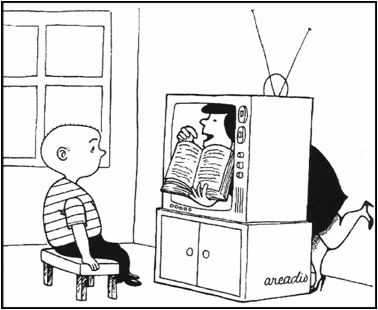Recommendation for individuals using a screenreader: please set your punctuation settings to "most."
Descriptive Statements:
- Demonstrate knowledge of the characteristics and purposes of various types of listening and barriers to listening effectively.
- Demonstrate knowledge of the social norms and conventions involved in interpersonal communication and how these are influenced by factors such as self-concept, cultural or socioeconomic background, age, and gender.
- Recognize methods of participating actively in conversations and group discussions, such as restating, clarifying, and using nonverbal cues.
- Recognize methods of incorporating effective and appropriate language styles, rhetorical devices, and vocal techniques into speeches on various topics and for various purposes, audiences, and occasions.
Sample Item:
The conversation below takes place among three coworkers at an electronics store.
NOELLE: We have great products at low prices, but we don't have enough customers.
We need to attract more business.
KEVIN: Some electronics stores let people try out the products right in the store.
People seem to like that.
DONNA: Yes, but doesn't that get expensive for the stores? They can't sell used
merchandise, right?
KEVIN: It's worth the cost if people end up buying something after they try it out.
We all know that customers rarely take our word that a product is good.
DONNA: Maybe you're right. Some customers think we're just trying to trick them
into buying things.
KEVIN: Exactly! But if we let them try the products in the store first, then they'll
end up convincing themselves to buy them.
NOELLE: __________________________________________________________________
Which of the following responses from Noelle would most clearly indicate that she has
been actively listening to Kevin and Donna?
- "Maybe we should increase our advertising in local newspapers and on television."
- "I don't know. It can be fun to test-drive a new car, but that doesn't mean you're going to buy it."
- "There will be serious consequences for all of us if our sales don't increase sometime soon."
- "I guess business is slow everywhere these days, but that's no excuse. We really have to try harder."
Correct Response and Explanation (Show Correct ResponseHide Correct Response)
B. This question requires the examinee to recognize methods of
participating actively in conversations and group discussions. In response B, by
summarizing and then reflecting on Kevin's and Donna's comments, Noelle demonstrates
that she has been listening actively.
Descriptive Statements:
- Analyze messages, meanings, biases, and themes conveyed through visual images in various media and in various combinations of media.
- Examine how elements of visual images used in various media can be manipulated to change personal behavior and influence public opinion.
- Examine how personal experience and prior knowledge can affect an individual's interpretation of visual images in various media.
- Recognize methods of establishing a clear purpose for a presentation and of organizing and modifying a presentation to correspond to the characteristics of a particular audience.
- Recognize methods of incorporating effective and appropriate visual images or aids into a presentation and of using effective and appropriate technologies and media to give a presentation.
- Demonstrate knowledge of legal, ethical, copyright, and source citation issues related to viewing and presenting media.
Sample Item:
Use the editorial cartoon below to answer the question that follows.

An adult woman holding an open book is bending into the television from behind it, so that her face, hands, and the open book protrude slightly through the screen area. The woman and open book are facing the boy, and the woman is pointing to one of the open pages.
Source: Esquivel, Arcadio. Mom Educating Son, reprinted by permission of Cagle Cartoons, Santa Barbara, CA. and Arcadio Esquivel, La Prensa, Panama.
Which of the following messages is this editorial cartoon most likely attempting to convey?
- Teachers should make learning fun by imitating popular television characters
and personalities.
- Adults are responsible for monitoring children's television viewing.
- Children now rely more on television for acquiring information and ideas than
they do on books.
- Television executives should provide more educational shows for children.
Correct Response and Explanation (Show Correct ResponseHide Correct Response)
C. This question requires the examinee to analyze the message conveyed
through a visual image. The editorial cartoon depicts a boy watching television. A
woman holds open a book and reaches out and through the television toward the boy to
show him the contents of the book. The image suggests that, for children, television
has replaced books as the medium through which they receive most new information and
ideas.

